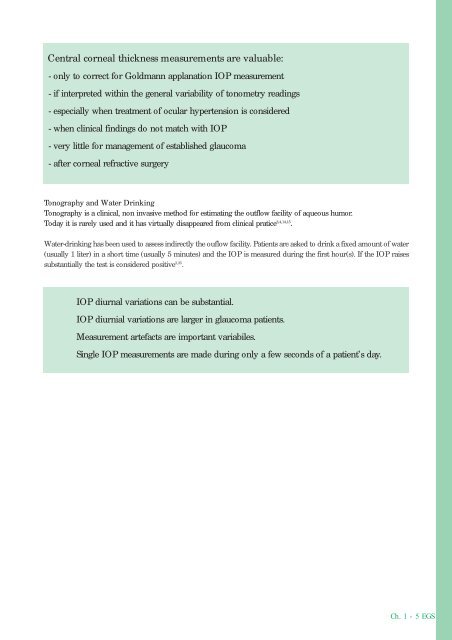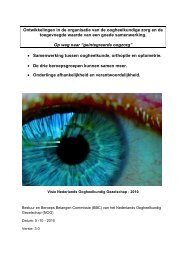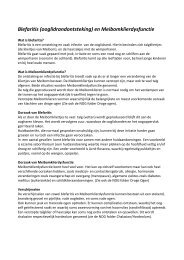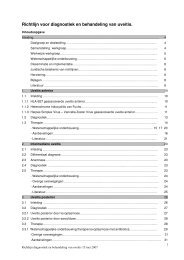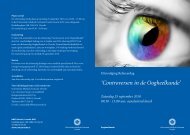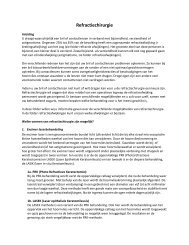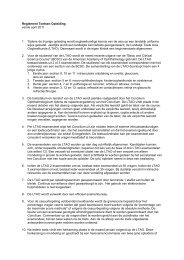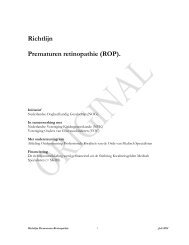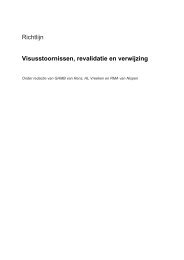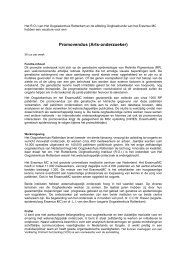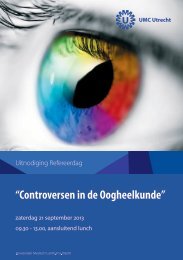terminology and guidelines for glaucoma ii - Kwaliteitskoepel
terminology and guidelines for glaucoma ii - Kwaliteitskoepel
terminology and guidelines for glaucoma ii - Kwaliteitskoepel
Create successful ePaper yourself
Turn your PDF publications into a flip-book with our unique Google optimized e-Paper software.
Central corneal thickness measurements are valuable:<br />
- only to correct <strong>for</strong> Goldmann applanation IOP measurement<br />
- if interpreted within the general variability of tonometry readings<br />
- especially when treatment of ocular hypertension is considered<br />
- when clinical findings do not match with IOP<br />
- very little <strong>for</strong> management of established <strong>glaucoma</strong><br />
- after corneal refractive surgery<br />
Tonography <strong>and</strong> Water Drinking<br />
Tonography is a clinical, non invasive method <strong>for</strong> estimating the outflow facility of aqueous humor.<br />
Today it is rarely used <strong>and</strong> it has virtually disappeared from clinical pratice 3,4,14,15 .<br />
Water-drinking has been used to assess indirectly the ouflow facility. Patients are asked to drink a fixed amount of water<br />
(usually 1 liter) in a short time (usually 5 minutes) <strong>and</strong> the IOP is measured during the first hour(s). If the IOP raises<br />
substantially the test is considered positive 3,35 .<br />
IOP diurnal variations can be substantial.<br />
IOP diurnial variations are larger in <strong>glaucoma</strong> patients.<br />
Measurement artefacts are important variabiles.<br />
Single IOP measurements are made during only a few seconds of a patient’s day.<br />
Ch. 1 - 5 EGS


